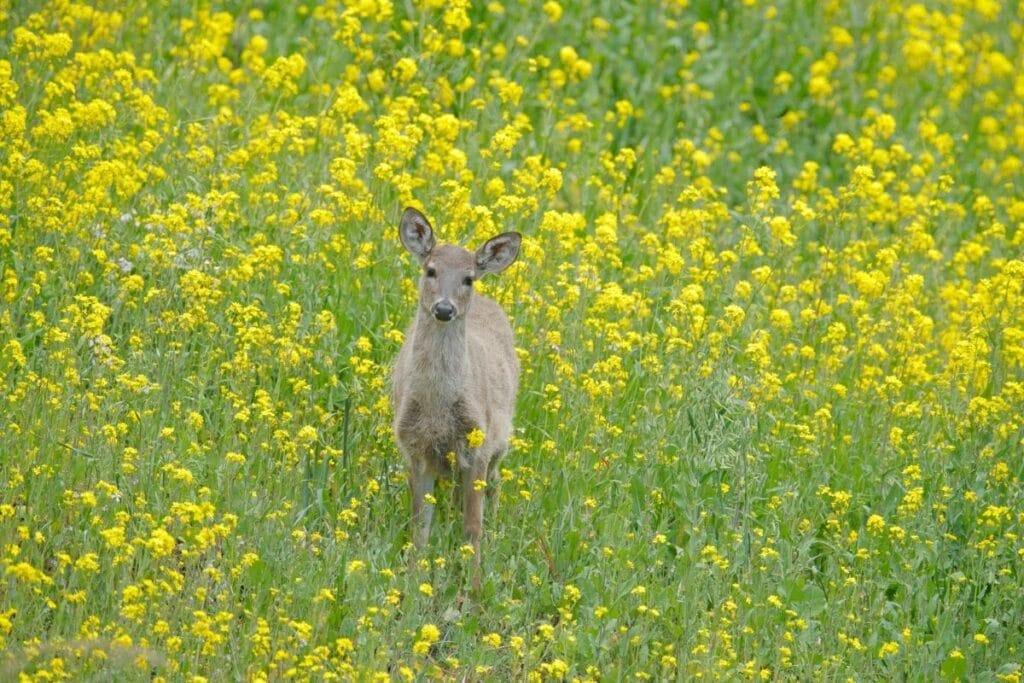If you’re like many people, you probably love having deer in your yard. They walk around looking elegant and majestic – sometimes they play or eat corn that you end up throwing out into the yard. If you get lucky, you can sometimes see some baby fawns!
Deer are fun to see in your yard, but problems can arise when they head toward your shade garden for a tasty feast.
If you have problems with the deer coming through your garden and eating all your plants – but don’t want to sacrifice having the deer around – there is a compromise that you can make.
Several plants are resistant to deer, either because they are too tough to be eaten or because they simply don’t taste good.
It is essential to note that all of these plants are deer resistant, not deer-proof. Even if you cover your garden in these plants, you might still get some deer damage. However, it likely won’t be as severe as usual.
All these deer resistant plants are lovely and attractive – just not to deer. Consider growing one of these deer resistant flowering shrubs, plants and flowers that deer won’t eat to keep your garden space safe.
1. Lambs Ears
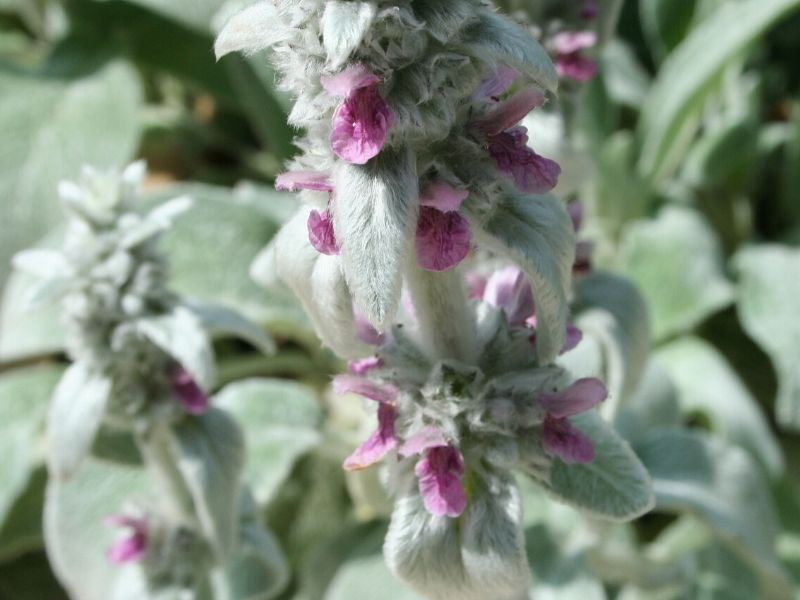
The texture of the perennial lambs’ ears is one of the coolest things about the plant. It gives the plant a fun, unique aesthetic and just provides something else that makes it stand out in your garden. However, the texture also helps keep it off the deer’s menu.
Most deer don’t like eating the waxy fuzzy texture of the lamb’s ear leaves, so they will stay away from the lambs’ ears (as well as other plants nearby, in most cases).
2. Marigolds

Marigold flowers are some of the best annual flowers to plant in your garden. They look beautiful, often add a splash of color, and also smell really nice. If you have a clump of marigolds in your garden, then you can safely enjoy them without deer munching on them.
The smell of the marigold flowers, while delightful to humans, is one that doesn’t make the deer happy. The strong scent turns the deer away, so you won’t have to worry about them eating it. As an added bonus, marigolds repel many kinds of insects, too.
3. Foxgloves
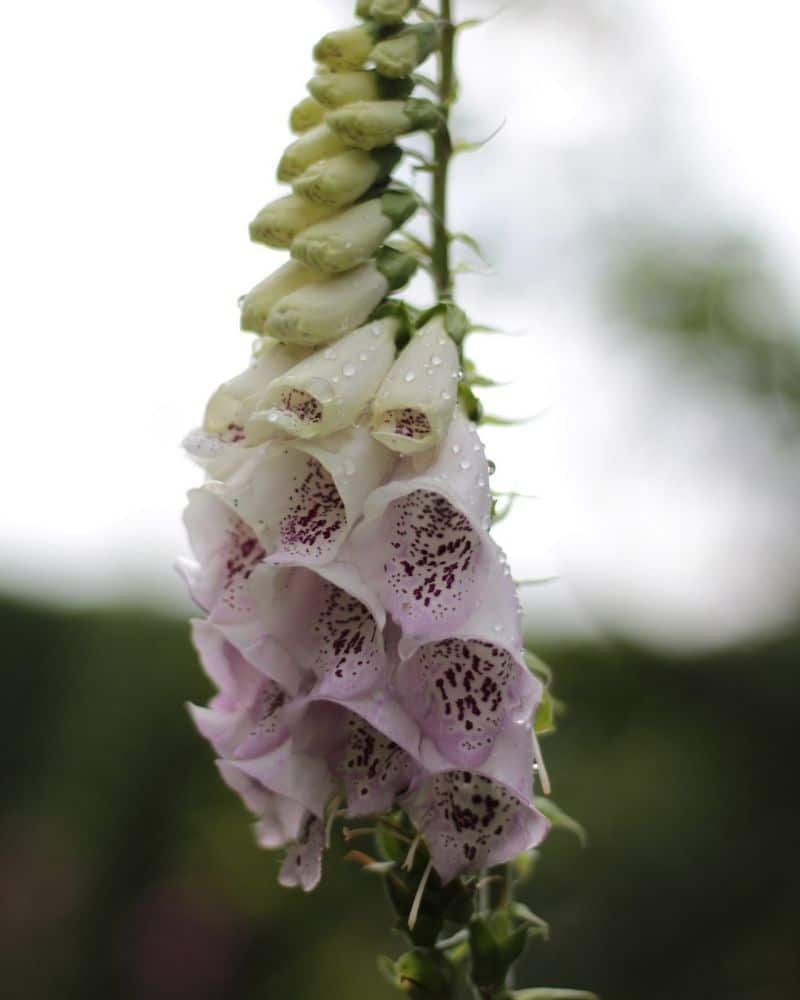
Foxglove is considered one of the best deer resistant plants due to its toxicity.
Foxglove plants have both spikes and blooms, making them beautiful as a choice for biennial plants. However, despite their beauty, foxgloves are very toxic and shouldn’t be grown if you have pets or kids who like to nibble on plants. The poison is also what keeps the deer from nibbling on it themselves.
Depending on whether you want biennial or perennial foxgloves, you can plant different types of foxgloves to protect your garden all year round.
4. Rosemary
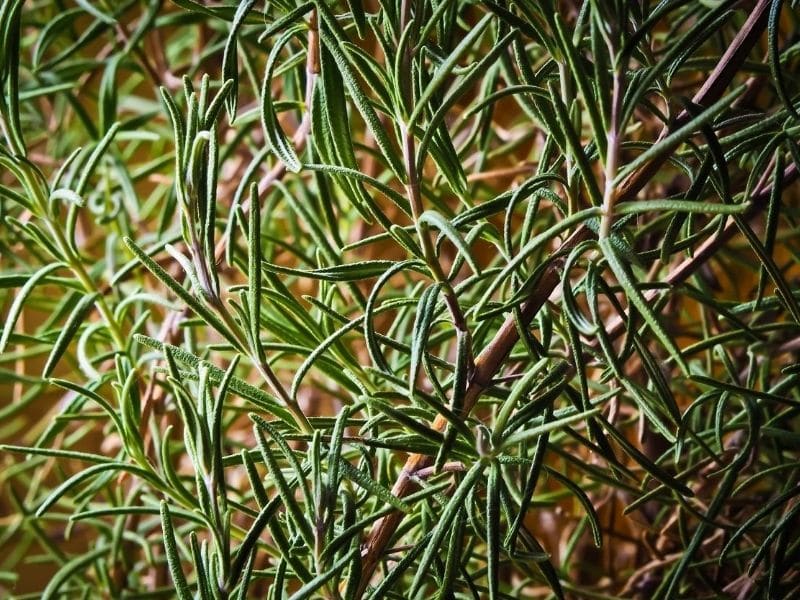
If you want total protection for your garden, then growing some rosemary can be a straightforward way to keep deer and mosquitoes out. Additionally, you can pick some yourself to use as a flavoring or as a garnish in all sorts of dishes. It’s a very easy herb to grow, and while its scent and taste are delicious and healthy for us, rosemary simply isn’t the best for deer.
5. Mint

Another highly deer resistant herb that we can add to the list is mint. While it is a fantastic herb that can add flavor to a tea or dessert, you also can use it as a deer repellent. The smell and intense taste of the herb deters deer from munching on it. Mint is also very easy to grow. Just be mindful of where you plant it – mint can be invasive and spreads quickly throughout a garden.
6. Crape Myrtles
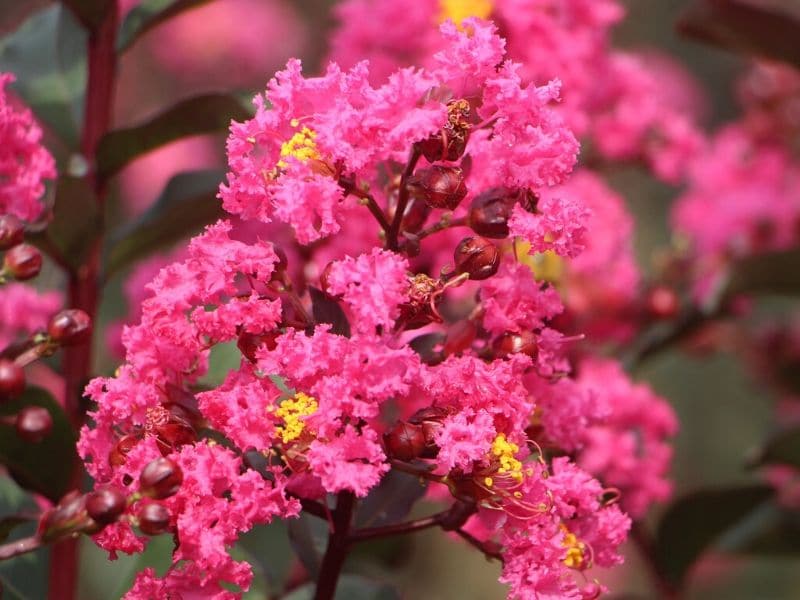
Crape myrtles are magnificent trees that can add a splash of color to your yard. They are easy to grow and keep maintained. Deer don’t eat any part of the crape myrtle, including the berries, flowers, or bark. This is the perfect type of tree to have in your yard if you want the deer to stay away!
7. African Lily
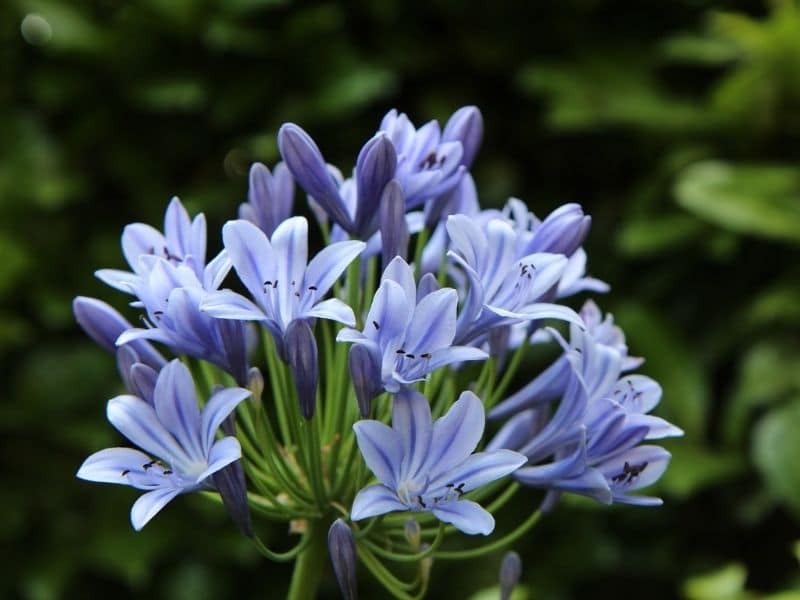
We’ve focused a lot on repelling deer, but what if you could repel deer while also attracting beneficial creatures to your backyard? The African Lily has large pods of flowers on it, and these flowers are quite enticing to butterflies. Naturally, deer won’t eat these flowers.
8. ‘Dwarf Marine’ Heliotrope
The Heliotrope is prized for its scent, which some people compare to cherry pie. The flowers have a purple color that shines in the sun. The large flowers are beautiful, and the bush looks very nice. The deer will keep away from the dwarf marine flower, and it will be an excellent addition to your garden.
9. Yucca
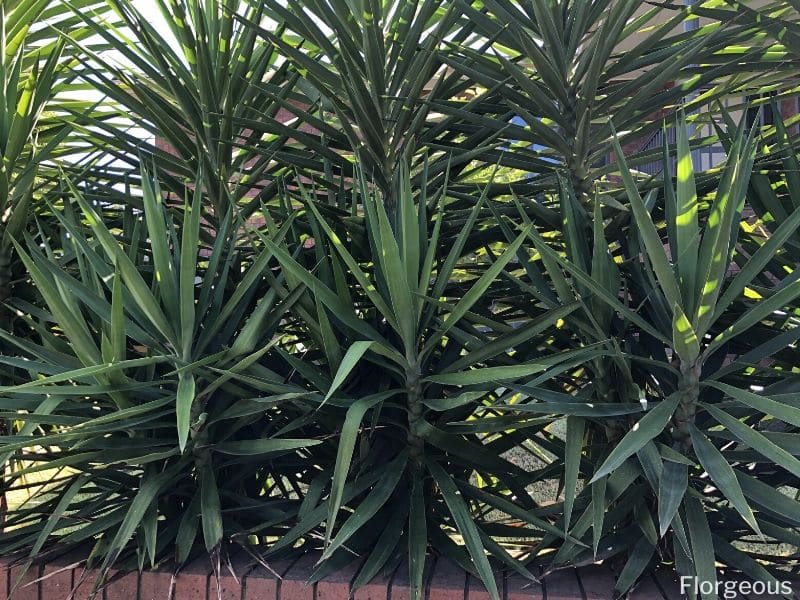
The yucca plant is very spiky, with pointed fronds and leaves that support beautiful flowers. The plants are a great addition to any garden, and the spikes also help to keep the deer away. They simply don’t like eating these sharp fronds unless they are absolutely desperate for food. You can also look for other types of spiked plants that have the same effect.
10. Zinnias
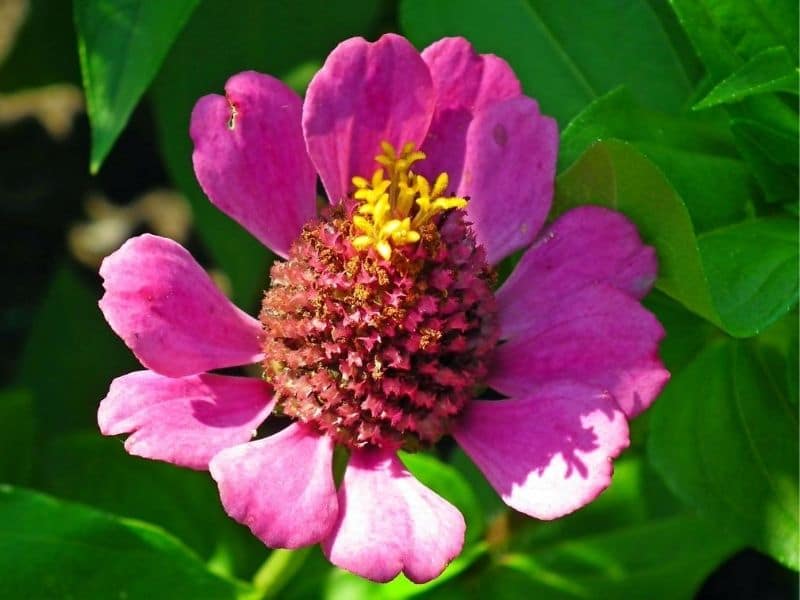
Zinnias are gorgeous and display large, colorful blooms in just about any shade you can imagine. Easy to grow and care for, zinnias are annuals that grow well in containers. Plant them in a border, and you’ll be able to keep deer out for sure.
11. Brunnera

The ‘Dawson’s White’ brunnera is a lovely flower, with blue and purple blooms and white edges that make it look incredibly unique. The leaves of these deer resistant perennials are textured and beautiful to look at in their own regard, so planting large patches in your garden can only add to its overall appearance. Plus, the deer keep away from the plant due to its texture and taste.
12. Asparagus
Lots of kids hate asparagus – and the same is true for deer! It’s one of the few vegetable plants that deer will steer clear of. While the deer will eat new shoots of the asparagus plants, they will avoid fully grown asparagus plants. They last decades as perennial plants and can be used as a barrier in your yard to keep the deer away.
13. Sea Holly
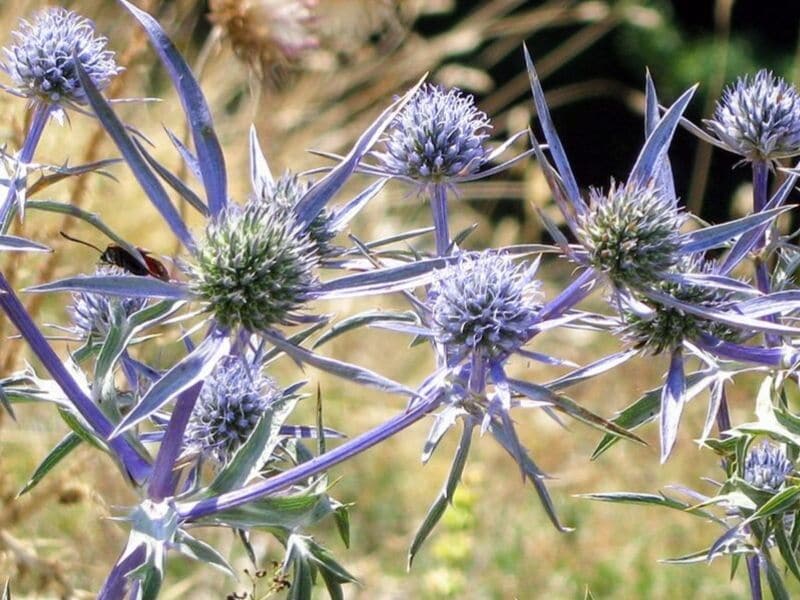
Another plant that will repel deer, Sea Holly, can also bring butterflies to your yard. The plant is unique and beautiful looking, with blue-green stems and blue flower heads that just look absolutely wonderful as a landscaping plant. Plus, the flowers and leaves are very abrasive, and deer hate eating them.
14. Sweet Woodruff
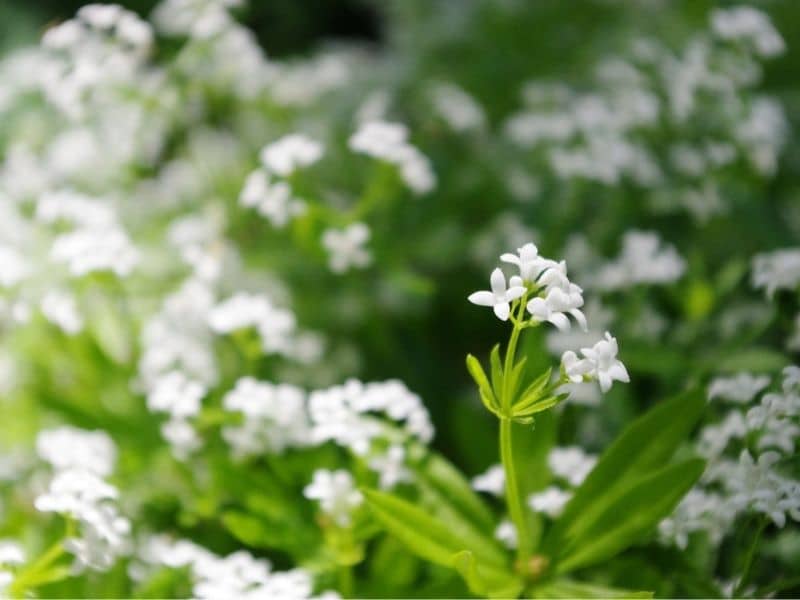
This grass-like plant is a perfect groundcover for your garden. The sweet woodruff flower often appears in the late spring, around the beginning of May.
The small white flowers are very fragrant and smell sweet to us humans. However, deer don’t like the scent and will walk away from it. This is a great plant to grow in the shade, too, as a low-maintenance groundcover.
15. Catmint

A member of the mint family, catmint grows in a neat form that doesn’t require any extra trimming. Once its root system is established, catmint is drought tolerant and requires little to no extra water.
Their fuzzy foliage and smell are two of the attributes that keep deer away.
16. Lily of the Valley
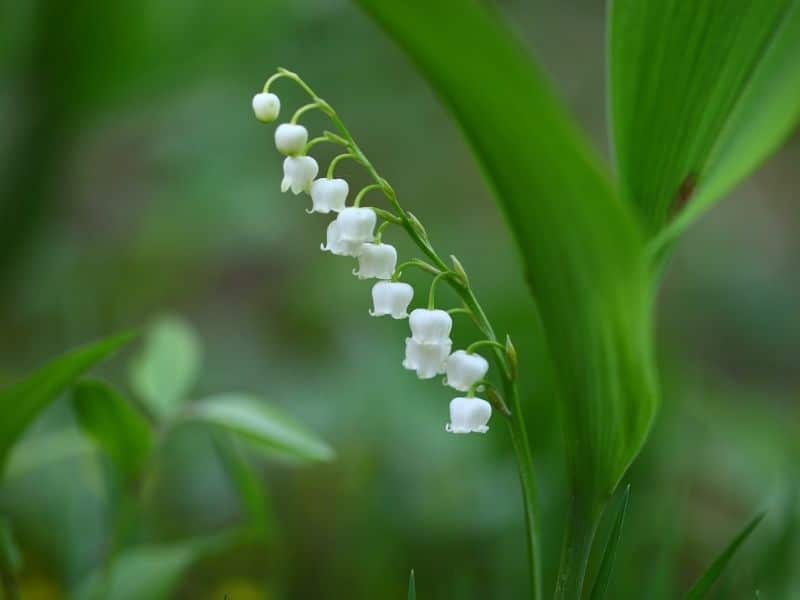
One of the most beautiful flowers around, you’ll be able to grow this perennial flower and see all the beautiful bell-shaped flowers. Also known as Convallaria majalis, it will grow no matter where you place it, and despite its beauty, deer tend to leave it alone. That’s good for you – you can continue to admire the flower and its beauty without worrying about deer ruining things for everyone.
17. Lungwort
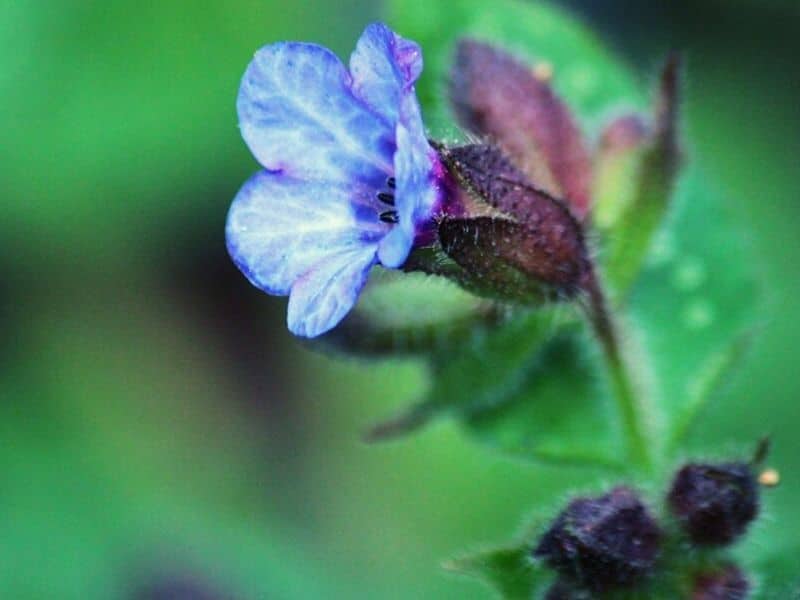
This flower’s name might sound like a sickness, but it is instead a very beautiful plant. The green leaves are speckled and covered in silver spots, and the patterns caused by this make the leaves really nice to look at. The leaves also are very resistant to deer, and you won’t have to worry about the patterns being interrupted by deer bites.
18. Daffodils
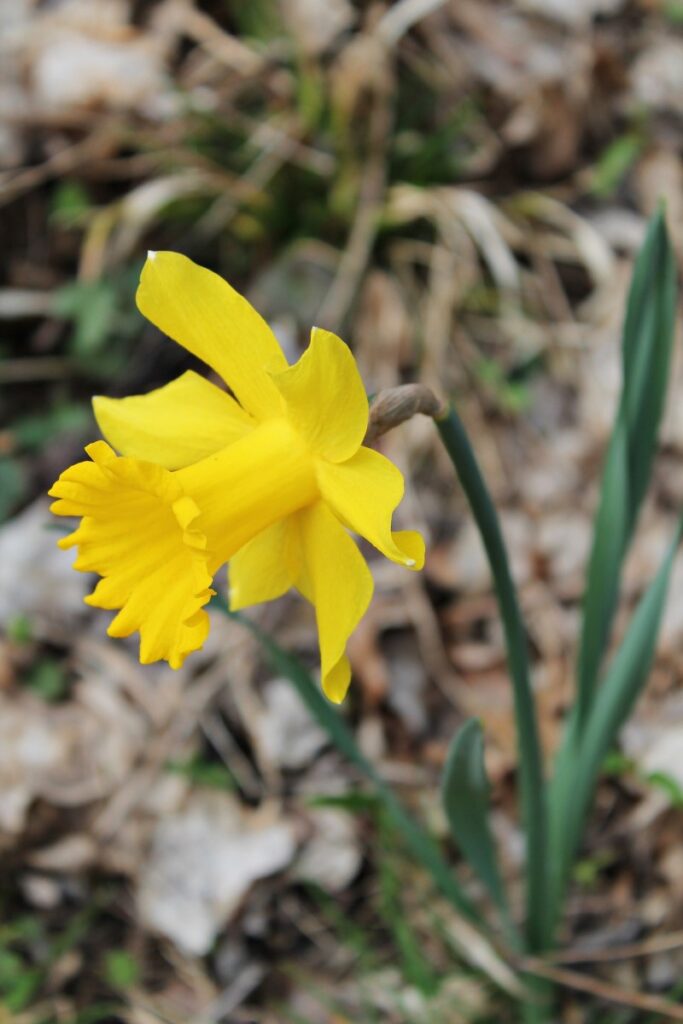
Sure, this narcissus flower is quite common – but it’s also very deer resistant. The yellow flower looks quite lovely as it grows in tight, dense clumps.
However, daffodils are toxic to animals, and creatures like deer and squirrels leave the daffodils alone. A beautiful springtime garden addition and an effective deer repellent, daffodils hit every mark!
19. Sunflowers
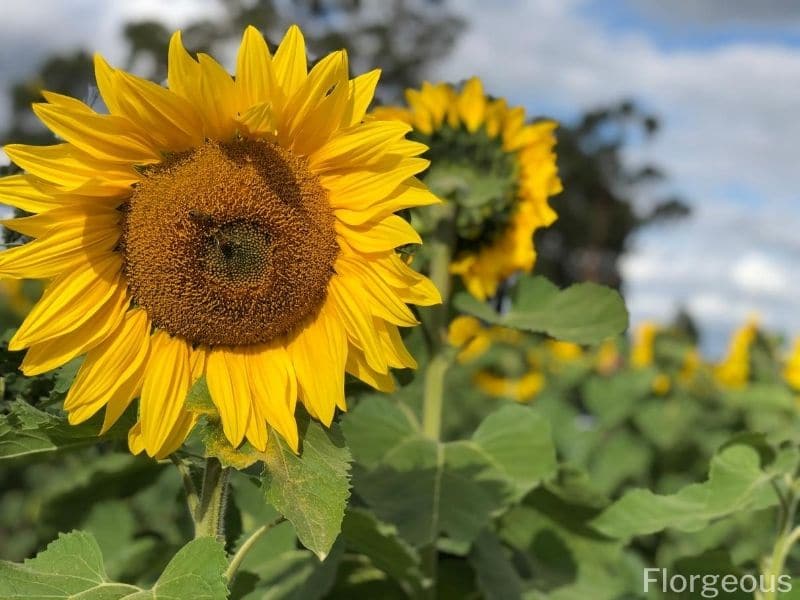
These beautiful flowers are known for following the sun and for their very yellow (some might say sunny!) blooms. However, they are also effective at keeping the deer away from your yard. Sunflowers have very rough leaves that deer do not like to eat.
That said, much like humans, deer do love the taste of sunflower seeds! So if you want to keep your seeds safe, be sure to place mesh netting over the flowers to keep them safe from prying deer. They can tip the tall stalks over, too, so don’t assume that the height of your sunflower plants will serve as an automatic deterrent.
20. Morning Glory Vines
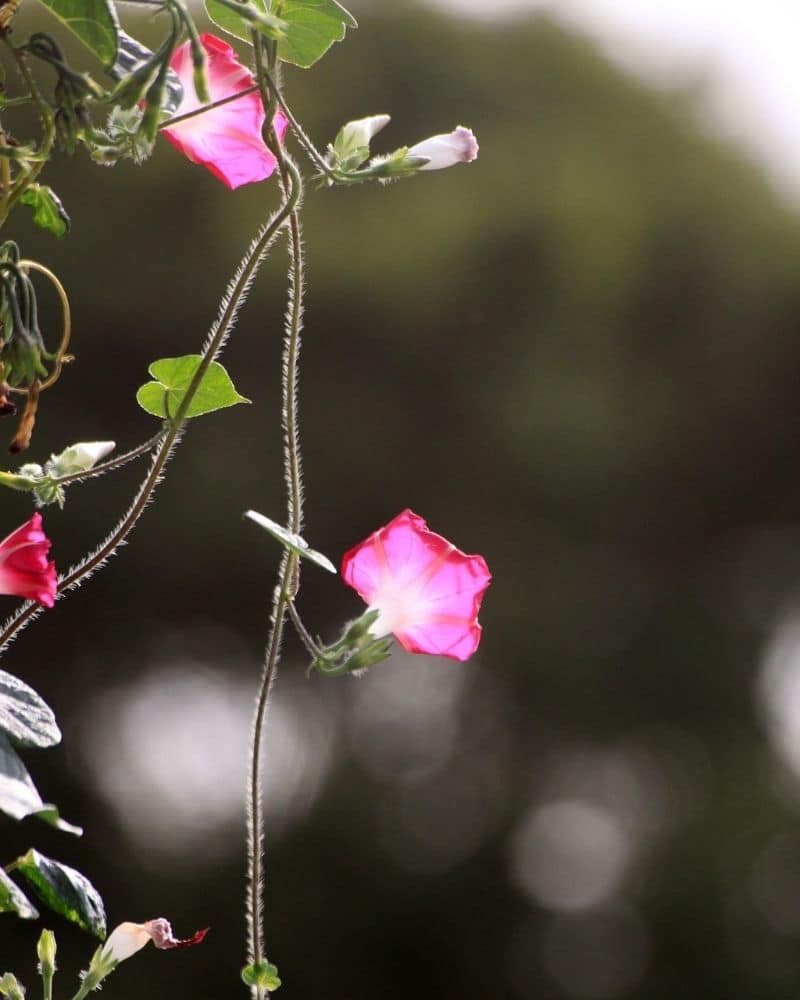
Morning glory vines are not only annual but can also act as shields for your other plants. All you have to do is place the vine around the fence near your garden. The deer won’t browse among your garden plants if they happen to see the vines.
Plus, the vines do have some unique flowers, so your fence will be covered in non-stop colorful blooms.
21. Four o’clock Flowers
These flowers are named ‘four o’clock’ because they always bloom at around four in the afternoon. The flowers they produce, calendulas and nasturtiums, are edible to humans. However, deer dislike the strong taste of the flowers, and you’ll have another type of edible flower that you can use on your food.
22. Peonies
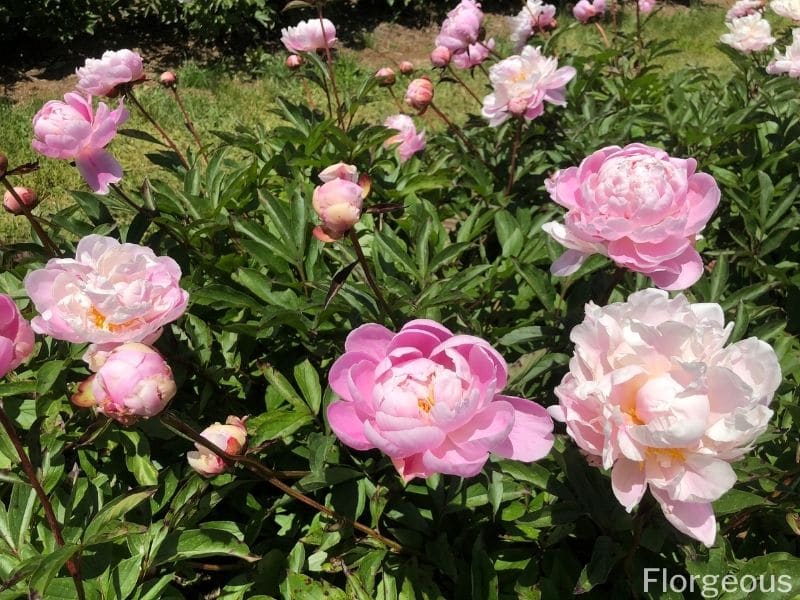
These beautiful perennial flowers are very long-lived and can last around 100 years in the right conditions. Of course, this means that they are very resistant to the weather and animals as well.
Peonies are flowers that deer don’t eat because they stink to deer, and that keeps them away. You can find beautiful peony flowers in six different types of bulbs, and each bulb has a distinct scent that is very nice smelling to humans.
23. Snapdragon
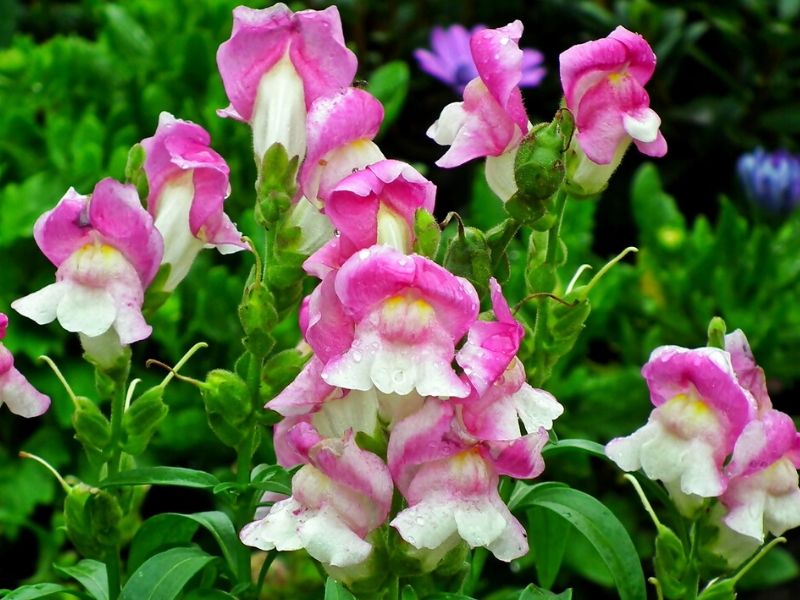
These snapdragon flowers reach up the sky with flowers blooming on tall spikes. You’ll be able to find them in several different colors and sizes. Whether you want a dwarf variety that comes up to six inches or a larger three-foot version, you can find the snapdragon in almost every color.
But size isn’t the only thing that can be customized when you are growing these flowers. You can also choose from a variety of colors. From red to white to multicolored, you’ll be hard-pressed to pick a favorite type of snapdragon. While you might have your personal favorite, the deer dislike the spikes and the flowers’ taste.
24. Boxwood
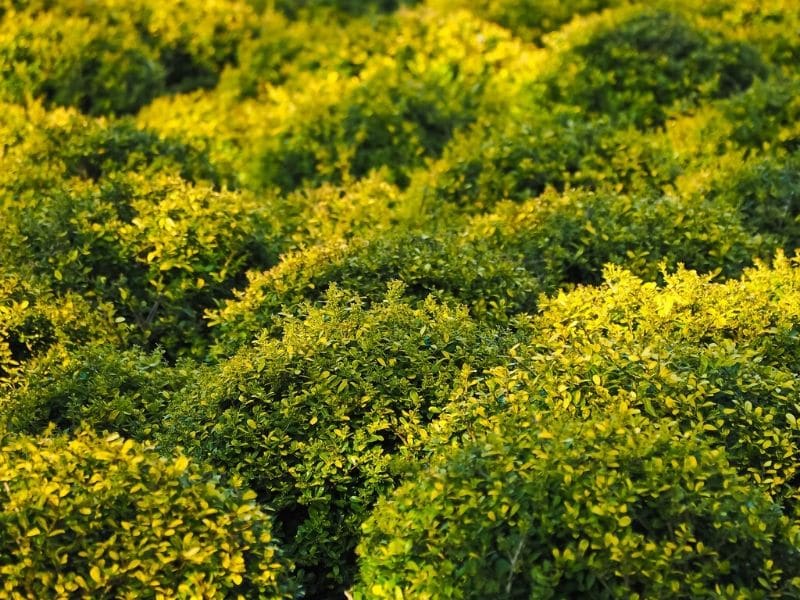
Boxwoods are very attractive evergreen shrubs for your garden. While they don’t have any flowers, these evergreen shrubs can be pruned with ease.
You can have boxwoods in any shape and size, and while they look good to you, they smell horrible to deer. They are the cornerstone for every deer resistant yard, and some of the biggest ones are even 20 feet tall!
You can use them for hedges and borders, and just to add a splash of green to your yard.
25. Butterfly Bush
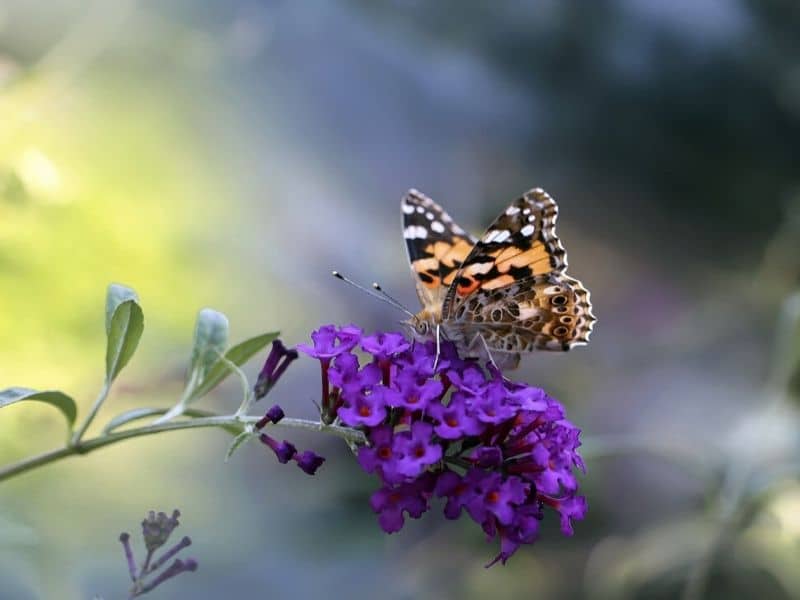
The name says it all about what this bush attracts to your garden. The honey-scented flowers that come in several colors are like catnip to pollinators like butterflies – they just can’t get enough! The bushes’ blooms can be found in shades of pink, white, and purple.
You’ll be able to watch bees and butterflies fly into your summer garden and help themselves to your flowers. The butterfly bush also keeps the deer away, so you get a win-win!
26. Juniper
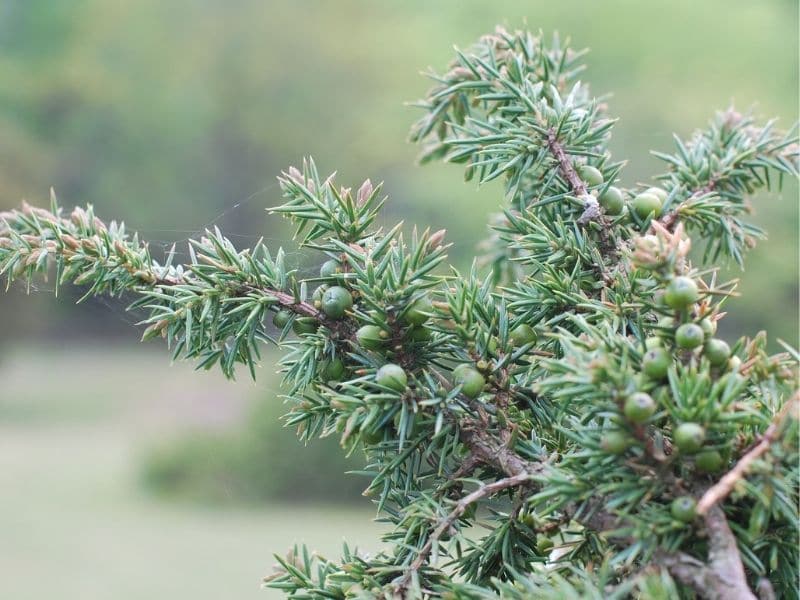
Juniper plants have several uses in the garden. Gardeners grow them for their berries, suitability for hedges, and berries. You can use them as groundcovers, topiaries, and even much more. Deer tend to stay away from them because of the oils in their needles, and some people create hedges out of juniper to help keep the deer from wandering deeper into the garden.
27. Monkshood
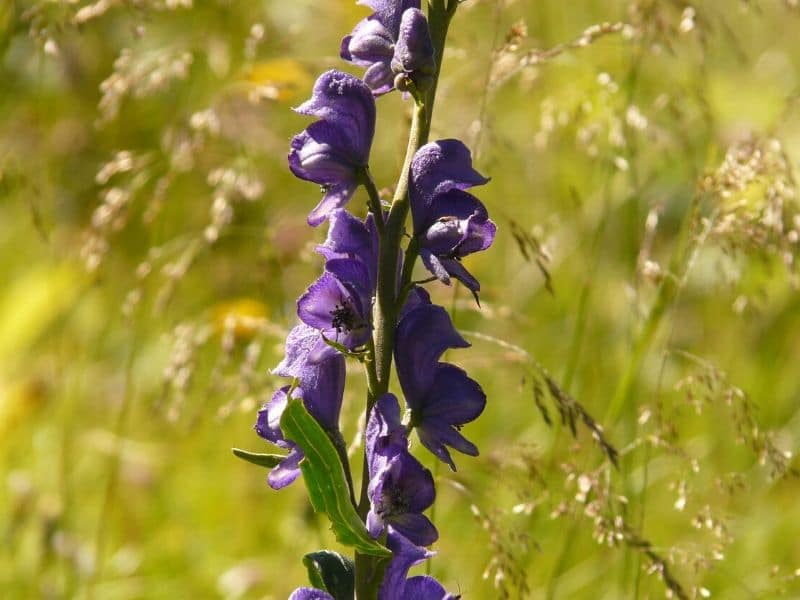
Monkshood is very poisonous to both people and animals. Of course, this includes deer. Deer stay away from any monkshood, as will your pets, in most cases. The plants are named monkshood because they look just like monk’s hoods. Because of this, the flower is very beautiful to look at.
You can quickly grow some in your garden and enjoy the sight of the flowers during early summer and early fall.
How to Keep Deer Out of Garden
Rather than using pesticides or other repellents to keep deer away from your yard, you can simply plant some of these deer resistant flowers and still keep the deer around for you to watch.
With these deer resistant plants, you won’t have to rely on harmful chemicals or mechanical deterrents that can mess with your garden’s health. Instead, you can keep things all-natural by populating your garden with something that deer don’t like to eat. Plus, these flowers and plants look absolutely amazing. These colorful plants and flowers will provide the double benefit of not only looking nice, but some can even attract pollinators to your garden!
These deerproof flowers are very easy to grow and can grow in several different conditions. You’re sure to find the right one for your landscaping needs!
FAQs
What is the most deer resistant hedge?
Plants such as boxwood, holly, and certain types of juniper are often considered among the most deer-resistant choices for hedges. However, deer resistance can vary, and local conditions may influence deer preferences.
Do deer eat evergreen?
While deer generally avoid eating evergreen plants, their preference can vary based on factors such as local food availability and environmental conditions. Some evergreens, like arborvitae and certain types of spruce, are considered less palatable to deer.
Does aloe vera keep deer away?
Aloe vera is not typically known for deterring deer. Deer may not find aloe vera appetizing, but relying solely on aloe vera to keep deer away is not a reliable strategy. Using a combination of deer-resistant plants, repellents, or fencing is often more effective in deer management.
See more: What can I feed deer in my yard?
*featured image by OndrejProsicky/depositphotos

